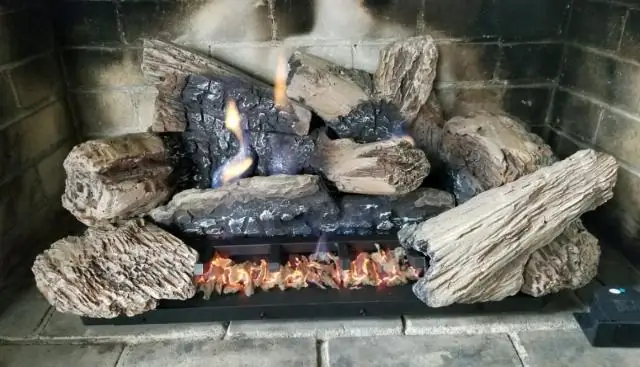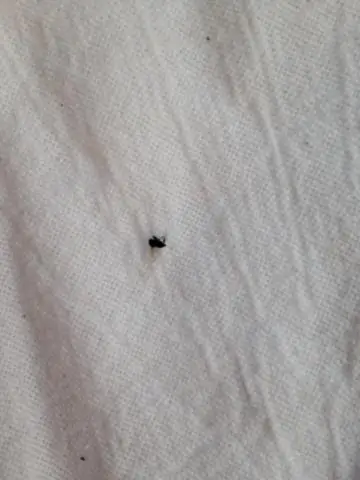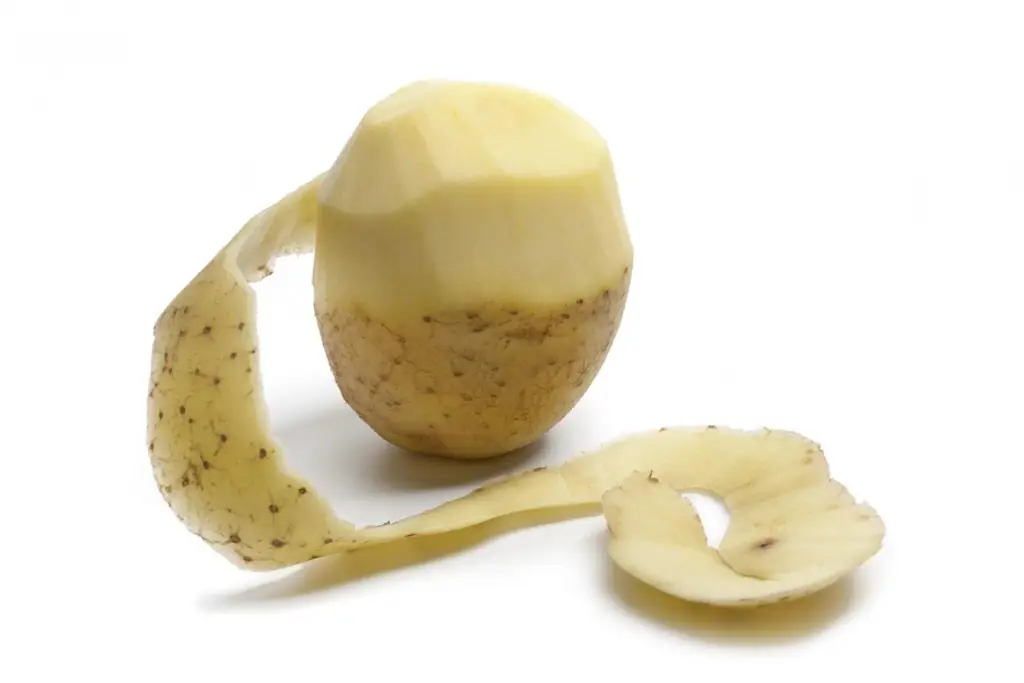
Table of contents:
- Author Bailey Albertson [email protected].
- Public 2023-12-17 12:53.
- Last modified 2025-06-01 07:32.
We clean the chimney ourselves

Until recently, both in cities and in rural areas there was only one type of heating - stove. Specially trained people - chimney sweeps monitored their technical condition. They checked chimneys for cracks, monitored oven draft, and cleaned soot. Today, private houses are equipped with a wide variety of stoves, stoves, fireplaces. You have to serve them yourself - to clean the chimney and monitor the technical condition.
Content
- 1 Chimney device, what is its cleaning and how often it should be carried out
-
2 Methods and devices for cleaning the chimney with your own hands
-
- 2.0.1 Biological (potato peelings, starch, firewood, etc.)
- 2.0.2 Chemical method
- 2.0.3 Mechanical method
- 2.1 Video: how to make a plastic bottle brush
- 2.2 Video: how to clean a chimney with a chainsaw
- 2.3 Technological elements for chimney cleaning
- 2.4 Prevention of flue pipe clogging
-
Chimney device, what is its cleaning and how often it should be carried out
The first cleaning of the chimney should be carried out 1.5-2 years after the start of operation of the stove. During this time, a layer of soot of more than 2 mm accumulates in the pipe, which is a guideline for cleaning. In the future, the chimney should be cleaned 1-2 times a season. This is best done in spring and autumn. In order to facilitate this process, it is necessary to apply preventive measures, which will be discussed below.

The hard work of a chimney sweep
The chimney becomes covered with soot during the heating process. It appears gradually from the combustion products and layer by layer is deposited on the pipe walls, gradually narrowing the passage. And since soot is a very good thermal insulator, the furnace channel heats up much weaker and much more firewood is required for heating.
A thick layer of soot reduces traction, which means that the amount of condensation increases, which, in turn, contributes to the rapid formation of new layers. Unburned solid particles accumulate in the pipe, which can easily ignite when the gas flows rise. This leads to the quickest burnout of the pipe walls and increases the risk of fire. Especially in severe frosts, when a large amount of firewood is used to heat the house and the temperature in the furnace is very high, sparks and even small lights fly out of the chimney clogged with soot. And this threatens with fire outbuildings and even neighboring houses.

Severely clogged chimney
In the event of a strong blockage, the likelihood of reverse draft increases - the smoke will partially or completely go into the room and the likelihood of being poisoned by combustion products increases
Chimney cleaning consists, first of all, in freeing the pipe surfaces from soot, debris (after the summer season, there may be small branches, dry leaves, and even bird's nests). At the same time, all elements of the oven are checked and cleaned. The firebox and ash pan are cleaned last.
With timely cleaning of the chimney, you will significantly reduce the consumption of firewood, you will be confident in your own safety, and the chimney will not need emergency repairs
Do-it-yourself methods and devices for cleaning the chimney
There are three main methods for chimney cleaning: chemical, biological and mechanical. Biological and chemical methods are rather prophylactic, preventing the formation of too thick a layer of soot. All these methods can be carried out independently, without resorting to the help of specialists, following certain rules.
Biological (potato peelings, starch, firewood, etc.)
One of the simplest and most common methods, widely used by the people due to the ease of use and the availability of the necessary tools. It is mostly prophylactic - it prevents the formation of a thick layer of soot. For this method, use aspen firewood, salt, potato peelings, walnut shells, naphthalene, blue mixture.
Potato peelings must be prepared in advance. It will take about half a bucket of well-dried scrubs. They need to be poured directly onto the heat so that they burn out immediately. When burned, a large amount of starch is formed, which softens the soot. You can use this method before proceeding with mechanical cleaning - it will be much easier to remove the soot layer.

Dry potato peels will help clean your chimney
Rock salt is more of a soot prevention agent. A small handful is poured onto the wood before kindling. Sodium chloride vapor destroys the viscous deposits in the pipe.

Salt dissolves deposits
Aspen wood is the most effective remedy. Since aspen has a high combustion temperature, firewood must be used at the end of the firebox. The vapors generated during combustion flake off the soot from the walls of the chimney and burns out during extreme heat. Therefore, when using aspen, you need to ensure that sparks do not fly out of the chimney. An alternative is birch firewood, previously peeled from the bark. The effect will be about the same.

Aspen firewood is the best way to remove soot
Walnut shells are excellent chimney cleaners. It has a very high combustion temperature, so more than two liters cannot be used in one pass. An alternative to aspen wood.

Walnut shell - chimney sweep assistant
Naphthalene is a good prophylactic agent. It is enough to throw one tablet into the fire, and the soot begins to flake off and come out with the smoke. But the smell of naphthalene is very persistent and then it is very difficult to get rid of it.

Naphthalene saves the house not only from moths
Blue Mix - Easy to make yourself if you have the right ingredients. 5 parts of copper sulfate, 7 parts of saltpeter and 2 parts of coal (coke) are mixed. Pour about 20 grams of the mixture into a preheated oven and close the door tightly. This mixture should not be used for cleaning open hearths.

Copper sulfate is one of the components
Chemical method
As well as biological, it does not solve the issue of complete cleaning of the chimney and is preventive. The stores sell a large number of a wide variety of compositions for cleaning the chimney: logs, briquettes, tablets, solutions. The principle of operation is that the harmless gas released during combustion decomposes the combustion products and their components, which could later turn into soot.
In almost all cases, there is a detailed instruction for use, dosage. The packaging is portioned, which is very convenient. As a rule, together with the packaging, they are placed in an oven and burned either separately or together with firewood. If the chimney is heavily clogged, use either several packages at the same time, or several times in a row.
"Log - chimney sweep" - a small bar or briquette, consists of ammonium sulfate, coal wax, phosphorus oxide and several other components. Prevents the formation of carbon deposits and the removal of previously accumulated soot. With continuous operation of the furnace, only 2 logs need to be burned per season. If the stove is heated 1-2 times a week, then one bar is sufficient.

One or two pieces of wood will keep the chimney clean.
"Kominichek" - is used only if the soot layer is up to 2 mm. The package contains 5 bags of 15 grams. The active ingredient is copper chloride. Converts soot to oxide, allowing it to burn at a lower temperature without generating a fire. Since it contains chlorine, it cannot be used for open ovens. When using, close the door tightly and ventilate the room at the end of the firebox.

After using the drug, do not forget to ventilate the room
PKhK - anti-carbonaceous chemical composition. The powder is burned together with paper packaging together with firewood or separately from them. Powder consumption per ton of firewood is 150-200 g.

There are many anti-lag agents
Since there are a lot of funds and they are produced both in our country and abroad, you can always choose the best option by trying several types.
Mechanical method
It is used in cases where the chimney is very heavily clogged. The soot layer, as mentioned earlier, is more than 2 mm. Before starting this type of work, you should prepare the oven. Pre-heat using potato peelings, aspen wood or walnut shells to soften the soot and peel it off the walls of the chimney. This will greatly facilitate further work.
Required tools:
- Brush for cleaning a chimney with a diameter of 1.2-1.3 times larger than the diameter of a pipe made of plastic or metal;
- Flexible rope with a handle (similar to plumbing) or strong rope;
- Rigid brush with a long handle (or with the ability to extend it);
- A metal weight or core that can be attached to the brush. It must be centered so as not to damage the chimney, and the diameter is 2 times smaller than the diameter of the pipe;
- Metal scraper with handle.

A lot of tools are needed to clean the chimney
The chimney can be cleaned both from above, from the side of the chimney, and from below - if it is a fireplace or an open stove. For top cleaning work, prepare a small ladder that can be fixed to the roof. Use a safety rope to prevent falling from the roof. All tools that may be required, lift to the roof immediately, so as not to go down again.
- Shoes should be non-slip, protect your hands with gloves.
- Use a respirator to prevent combustion products from entering the respiratory tract.
- Start work only in dry, calm weather.
- Do not take drugs that reduce reaction and do not take alcohol before starting work.
The oven must be completely cool before starting work. The combustion chamber is completely free of unburned logs and ash. Pre-close the furnace, cleaning and ash doors so that soot cannot enter the room through them. Cover open fireboxes with a thick damp cloth, which you will not mind throwing away later. The dampers must be opened fully, otherwise soot will fall on them and can lead to new blockages.

We start cleaning the chimney from the top.
Remove the cap from the chimney to provide access. Inspect the pipe carefully and start cleaning. Start working with a core attached to a cable. This will help to immediately remove large blockages and show the distance to which the chimney can be cleaned. If the carbon layer is very large, it is better to immediately use a scraper with a long handle to clean the walls and work with it, and then clean the walls using a brush with a core attached to it. Make sure that the core is in the center of the chimney and cannot damage the pipe.

Use different types of tools for cleaning
If the stove is with an open hearth, after cleaning from above, proceed to cleaning the chimney from below. Use a brush or brush with a long flexible handle that can be extended.

We clean the fireplace from below by extending the handle
The combustion chamber is cleaned last. You need to collect soot with a special vacuum cleaner or sweep it with a special brush.
If it so happens that you do not have the opportunity to purchase a special brush, you can make it yourself from a plastic bottle.
Video: how to make a plastic bottle brush
In some regions, it is common to clean the chimney with a chainsaw or leaf shaker (a petrol vacuum cleaner for collecting leaves). Of course, in this way it is enough to clean the chimney simply using a special snail nozzle with an air duct. Of course, from the point of view of ecology, this method cannot be called correct.
Video: how to clean a chimney with a chainsaw
Technological elements for chimney cleaning
In many ways, it is possible to simplify the care of the chimney if you provide cleaning methods at the design stage. As a rule, chimneys are now made of sandwich pipes or metal. It is not always installed strictly vertically, and sometimes it serves several stoves in the house at the same time. In this case, cleaning the soot will be more difficult due to the corners. And if there is a horizontal pipe section from the furnace, it is better to use a tee for connection. One of its sides opens with a threaded cover. Through the hole, you can both remove moisture and clean the riser. In some cases, a special removable glass may be provided.

Tee and condensate drains in the chimney project
In ovens built of brick, hatches for cleaning are necessarily provided. In some stoves, there may be several hatches.

The stove may have several hatches for cleaning the chimney
Prevention of flue pipe clogging
What should be done so that the chimney does not clog up so quickly? Use the stove correctly. The rules are simple, but if you follow them, it will simplify maintenance and help you use firewood more economically.
- You should not use coniferous wood for the firebox - they contain a lot of resin, which will remain on the walls of the chimney. Give preference to hardwoods. At the end of the firebox, add aspen logs or any other folk remedies.
- Heat the stove only with dry wood - wet ones give a lot of soot.
- There must be a head on the pipe. It will not only protect the pipe from debris, but also from precipitation.
- To reduce the accumulation of condensate, the pipe must be insulated.
- Do not turn the stove into a place to incinerate trash. Plastic, polyethylene, rubber melt and remain in the stove and on its walls. Garbage is best disposed of in a container or burned outside.
- Do not use flammable liquids for ignition.
- In severe frost, sometimes a fire occurs due to the fact that the stove is heated. Try not to overheat it.
- Carry out preventive maintenance in a timely manner, carefully monitor the condition of deposits on the walls.
With proper cleaning and constant adherence to the rules of the firebox, the stove and chimney will last a long time and will not require special care, and sometimes unforeseen repairs.
Recommended:
How To Get Rid Of Wood Lice In A House, Bathroom Or Other Rooms Of An Apartment - Various Methods Of Struggle, Including Folk Remedies

How to get rid of wood lice that have chosen your apartment with the help of folk recipes and industrial means. Ways to prevent them from reoccurring
How To Clean The Hood In The Kitchen From Fat, As Well As The Mesh And Its Other Parts, Using Various Methods And Means

We clean the hood in the kitchen and its other parts from grease and dirt: what tools and methods to use, especially for different materials, what is prohibited
How To Ignite A Cast Iron Pan Before The First Use And In Other Cases: Salt, Oil And Other Methods + Photos And Videos

How to ignite cast iron pans. Quick ways to get rid of engine oil residues, rust and carbon deposits
How To Clean The Chimney From Soot, Including Folk Remedies, As Well As A Cleaning Tool

How to clean a chimney without the help of a chimney sweep with your own hands. What materials to choose. What are chemical and folk methods for cleaning the chimney from carbon deposits
How To Use Potato Peelings As Fertilizer In The Garden And More - Useful Tips

Summer residents have long used potato peelings as fertilizer for many crops in the garden. What plants are best fed and how exactly?
